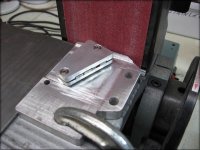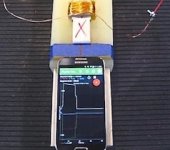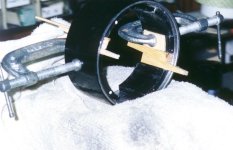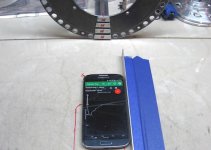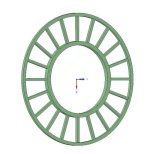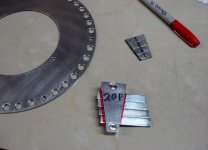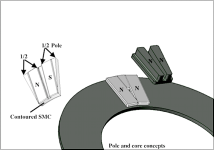APL
100 kW
- Joined
- Aug 6, 2018
- Messages
- 1,113
I haven't snapped to many yet, but I scored these all the way around, and they didn't take any effort to snap at all,
clean and straight too. Of course, I have a lot to brake yet,.. so I'll have to wait and see...
Keeping the magnets straight, N and S, is going to be a little hard, for sure. Plus, I have to mirror them N and S on each
back iron, which will be hard as well. I'll mark them with a sharpie, but it would nice if they were bonded as a one pice
trapezoid before they get bonded to the back iron.
I thought about bonding a piece of .020" fiberglass board to the outer face, and bonding the segments together vertical
at the same time. Maybe even slide a piece of paper or mylar in between the segments for some separation.
It would make it easier to sand/prep the backsides before bonding too.
Problem is when I go to bond them to the back iron if they're in one piece,.. will they brake apart when I get them close
to the steel? .020" board is not very stiff. Can I drop them in the spacer in one quick move? I Maybe could slide them on,
.. but might push all the glue out of the way.
clean and straight too. Of course, I have a lot to brake yet,.. so I'll have to wait and see...
Keeping the magnets straight, N and S, is going to be a little hard, for sure. Plus, I have to mirror them N and S on each
back iron, which will be hard as well. I'll mark them with a sharpie, but it would nice if they were bonded as a one pice
trapezoid before they get bonded to the back iron.
I thought about bonding a piece of .020" fiberglass board to the outer face, and bonding the segments together vertical
at the same time. Maybe even slide a piece of paper or mylar in between the segments for some separation.
It would make it easier to sand/prep the backsides before bonding too.
Problem is when I go to bond them to the back iron if they're in one piece,.. will they brake apart when I get them close
to the steel? .020" board is not very stiff. Can I drop them in the spacer in one quick move? I Maybe could slide them on,
.. but might push all the glue out of the way.


